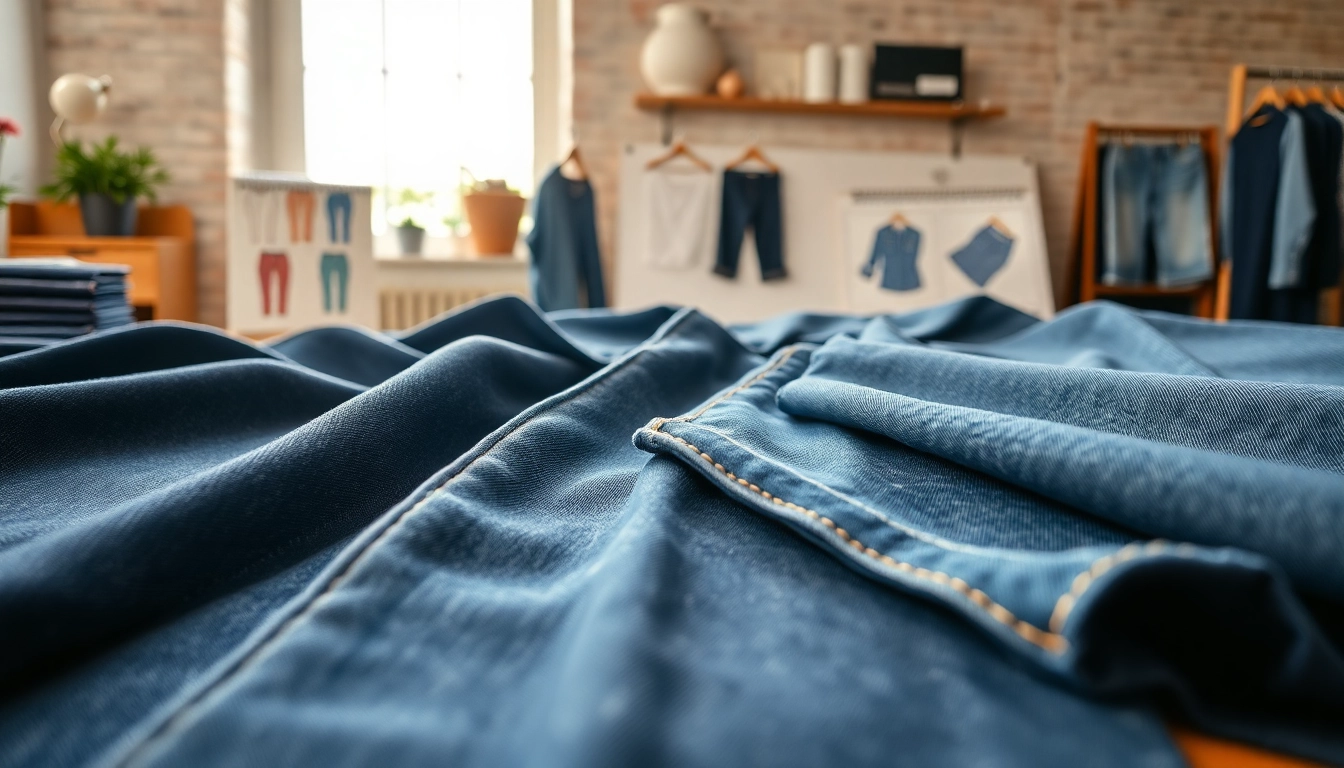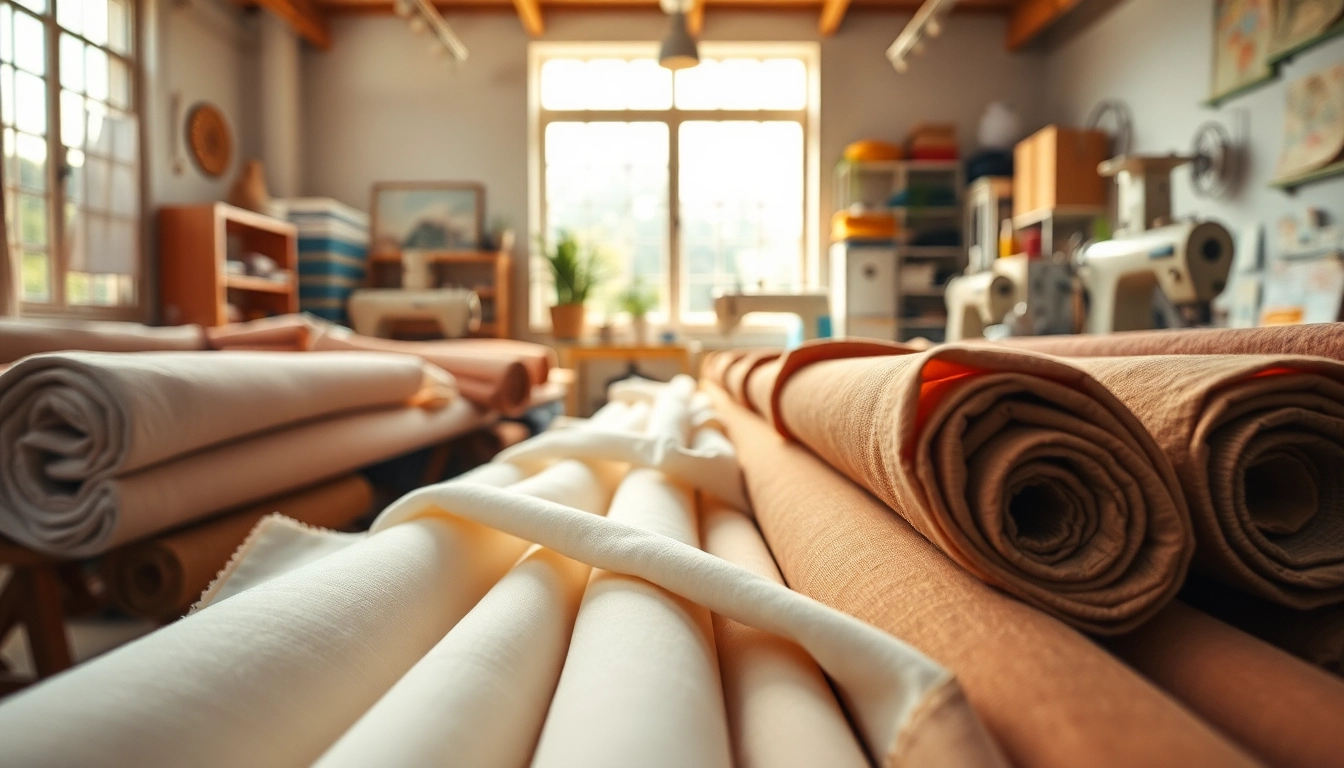Understanding the Market: A Comprehensive Guide to Jeans Cloth Manufacturers
Introduction to Jeans Cloth Manufacturers
The world of denim is vast, dynamic, and undeniably integral to modern fashion. Understanding the role of jeans cloth manufacturers provides essential insights into the foundations of the denim industry. From the production processes to the myriad of fabric types, this article delves into everything you need to know about denim manufacturing. It is not just about the end product but encompasses a sphere of innovation, sustainability, and quality assurance that shapes the fashion landscape as we know it.
What Are Jeans Cloth Manufacturers?
Jeans cloth manufacturers are entities that produce denim fabric used for creating jeans and other denim clothing items. These manufacturers encompass a wide range of production activities, including sourcing raw materials, weaving, dyeing, and finishing processes. The manufacturers may operate at various scales, from small artisanal workshops specializing in bespoke jeans to large-scale factories capable of producing millions of yards of fabric annually.
The Historical Significance of Denim Production
Denim’s history traces back to the late 17th century, originating from the French town of Nîmes. The sturdy fabric was adopted by workers for its durability, eventually becoming a staple in wardrobes worldwide. The introduction of jeans to the American market in the 19th century marked a turning point, as they transitioned from workwear to a fashion statement. This evolution has established denim as a cultural icon, making jeans a global phenomenon that intertwines history, labor, and lifestyle.
Key Players in the Jeans Manufacturing Industry
In the intricate web of jeans manufacturing, various stakeholders play crucial roles, including fabric producers, garment manufacturers, and fashion brands. Collaborations between designers and manufacturers have led to the birth of innovative denim styles and sustainable practices. Understanding these players and their contributions can provide insights into trends and developments shaping the industry.
Types of Denim Fabrics
Understanding Different Fabric Types
Denim fabrics come in various types, each serving unique purposes and styles. The primary distinctions can be found in the weight, finish, and blend of materials. For instance, core denim is commonly heavier, ranging from 12 oz to 16 oz, stimulating durability ideal for workwear. Conversely, lightweight denim fabric under 10 oz is suited for summer wear and casual styles.
Weaves and Their Impact on Denim Quality
The weaving technique employed can vastly influence the feel and look of denim. The most prevalent weaving method is the twill weave, which is characterized by diagonal ribbing and allows for greater durability and flexibility. Variations like Sateen or broken twill offer distinct aesthetics and quality perceptions, playing significant roles in consumer preferences.
Innovative Fabrics in Jeans Manufacturing
As the denim industry evolves, manufacturers are innovating with new fabric technologies. Stretch denim, which incorporates elastane fibers, provides enhanced comfort and mobility, catering to the modern consumer’s active lifestyle. Additionally, sustainable fabrics such as organic cotton or recycled denim are becoming more prevalent, reflecting the growing demand for environmentally responsible clothing.
Choosing a Jeans Cloth Manufacturer
Factors to Consider When Selecting a Manufacturer
Selecting the right jeans cloth manufacturer requires careful consideration of several factors. Prospective partners should evaluate the manufacturer’s experience, production capacity, and reputation within the industry. It’s also crucial to assess their commitment to sustainable practices, as more brands aim to align with environmentally conscious manufacturing.
Evaluating Production Capabilities and Flexibility
Understanding a manufacturer’s production capabilities is vital to ensure they can meet specific order sizes and deadlines. Flexibility in production can be a huge asset, especially for brands launching limited collections or responding to fast fashion trends. Engaging manufacturers that use agile methods can lead to timely turnarounds and help accommodate market demands.
Understanding Pricing and MOQ (Minimum Order Quantity)
Pricing structures and minimum order quantities can greatly impact the financial feasibility of partnerships. Manufactures might have varying MOQs depending on fabric types and production processes. In addition, understanding the cost breakdown will help brands evaluate their return on investment and profit margins effectively.
Best Practices in Denim Production
Sustainable Practices Among Jeans Cloth Manufacturers
The denim industry has faced scrutiny over environmental impacts, spurring numerous manufacturers to adopt sustainable practices. This may include using organic materials, implementing water-saving technologies, and reducing chemical use during dyeing processes. Brands that prioritize sustainability not only align with consumer values but also enhance brand loyalty in an increasingly eco-conscious market.
Quality Control Measures in Denim Production
A key aspect of jeans manufacturing is ensuring that consistent quality is maintained across production batches. Effective quality control measures can include fabric testing, in-line inspections during production, and final quality assessments. Robust quality control lowers the risk of defects, ultimately leading to higher customer satisfaction and reduced return rates.
Trends Influencing Modern Jeans Manufacturing
Currently, several trends are shaping the denim manufacturing landscape. The rise of e-commerce has affected how products are marketed and sold, prompting manufacturers to adapt to smaller, more diverse production runs. Furthermore, customization options reflect the consumer demand for personalized products. Keeping an eye on these trends enables manufacturers to strategize effectively and align with market trajectories.
The Future of Jeans Manufacturing
Technological Advances in Denim Production
The future of jeans manufacturing is intertwined with technological advancements that streamline processes and enhance productivity. Automation in weaving, cutting, and sewing can reduce labor costs and improve efficiency. Emerging technologies such as 3D printing and AI-driven analytics are also poised to revolutionize the design and production landscape, creating opportunities for bespoke denim pieces on a larger scale.
The Growing Demand for Custom Denim Solutions
As consumer preferences evolve towards tailored clothing, the demand for custom denim solutions continues to rise. Many manufacturers are employing on-demand production strategies, allowing brands to offer bespoke services with minimal inventory risk. This shift not only satisfies consumer demand but also facilitates a more responsive supply chain.
Market Predictions for the Jeans Industry
Market forecasts indicate a steady growth trajectory for the jeans industry, driven by constant innovations and shifts in consumer behavior. Denim remains a staple in wardrobes globally, yet adaptability to changing styles and sustainable practices will determine long-term success. Manufacturers dedicated to evolution and responsible practices are likely to lead the market well into the future.














Post Comment